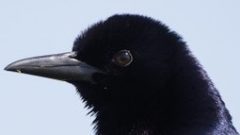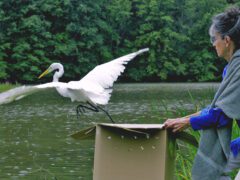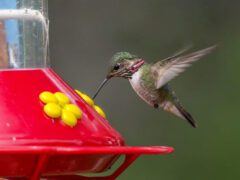The Four Keys to ID
- Size & Shape
Common Grackles are large, lanky blackbirds with long legs and long tails. The head is flat and the bill is longer than in most blackbirds, with the hint of a downward curve. In flight, the wings appear short in comparison to the tail. Males are slightly larger than females.
Relative Size
Larger than a Red-winged Blackbird; about the same size as a Mourning Dove

 robin-sized
robin-sizedMeasurements
- Both Sexes
- Length: 11.0-13.4 in (28-34 cm)
- Weight: 2.6-5.0 oz (74-142 g)
- Wingspan: 14.2-18.1 in (36-46 cm)
© T I / Macaulay Library
- Color Pattern
- Behavior
- Habitat
Regional Differences
The “bronzed grackle” race of the Common Grackle, breeding roughly west of the Appalachians and in New England, has the characteristic bronzy back. Birds of the Southeast, from North Carolina to Louisiana, often called the “Florida grackle,” are darker green on the back rather than bronzy, and they're purple on the belly. An intermediate race along the Eastern seaboard is sometimes called the purple grackle.






























